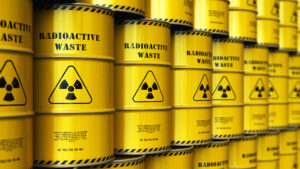 The management, treatment and recycling of waste result from an observation: the volumes of waste have multiplied since 1950, as well as their harmful effects on health, the environment and the economy.
The management, treatment and recycling of waste result from an observation: the volumes of waste have multiplied since 1950, as well as their harmful effects on health, the environment and the economy.
According to the Environment Code, waste is any residue from a production, transformation or use process, any substance, material, product or more generally any property, abandoned furniture or that its holder intends to abandon.
In other words, everything that is abandoned is waste. This does not mean that this element cannot be used, as it is or after modification. Only those that are classified as ultimate waste are really unusable and should be stored to avoid environmental pollution.
In Europe each inhabitant throws on average some 354 kg of waste per year in their trash. Added to this is the waste produced by industry and businesses, by agriculture or by healthcare activities. In total, the average waste produced by each person is around 14 tonnes per year! About a third is incinerated, a third is recycled (recycling, composting or anaerobic digestion) and a third is landfilled.
Different types of waste
Depending on their nature, their source or their toxic nature, waste is divided into different categories.
- household waste – including household waste to be incinerated and sorted recyclable waste – that we produce in everyday life
- non-hazardous waste from economic activities that resemble household waste, but is produced by businesses or manufacturers
- toxic waste from economic activities which represent a danger to health and the environment
- wastes from healthcare activities with infectious risks that require special treatment
- inert waste which can be reused in sub-layers for roads or buried in waste storage centers
- agricultural activity waste which is treated in specialized centers
- radioactive waste which is entrusted to the Agency for the Management of Radioactive Waste
Biodegradable plastic is created from agricultural waste. Every year, tons of plastic are dispersed in the environment and especially in the ocean. One solution proposed by some laboratories would be to replace this petroleum derivative with a biodegradable and non-toxic plastic.
For good waste management, a distinction must be made between waste according to its degradation time in the soil. Biodegradable elements, that is to say based on organic materials (green waste, paper …) disappear in less than a year, but it takes 10 years for metal and 100 to 1,000 years for plastics, polystyrenes and other similar synthetic materials.
In addition, waste management is not trivial: some waste can be harmful to human health and the environment.
To avoid being invaded by this waste and to limit the risks of pollution and poisoning which would result from it, waste treatment procedures are put in place. The principles applied, before and after the production of waste, are the reduction of volumes, the reduction of their toxicity, the improvement of their recycling (potential and realized) and the secure landfill of final waste. As these processes are expensive, the spotlight is given to those who make it possible to recover waste.
Environmental and health issues
The accumulation of waste generates four types of nuisance.
1/ A deterioration of the living environment caused by visual nuisances (plastic bags hung in trees, macro-waste on beaches) or olfactory (organic matter in decomposition, combustion of chemical materials).
2/ An economic impact due to the loss of the attractiveness of a site following this deterioration of the living environment and the decrease in its productivity, in the case of a fishing area or agricultural land. To this can be added the additional costs caused by pollution control, in the case of drinking water for example, and by the societal consequences of intoxication: medical treatment, work stoppages, etc.
3/ Because there is also a health risk following injuries (shards of green, syringes …), intoxication (water, air pollution …) and diseases (bacterial proliferation, parasite infestation, rats …).
4/ Finally, environmental pollution and ecological degradation during eutrophication of the environment, poisoning, suffocation or injury caused to wildlife when it absorbs or clings to waste.
More indirectly, waste is a reflection of the consumer society and its exploitation of natural and energy resources. Processing them for recovery is a way to compensate for the depletion of these resources and the degradation associated with their exploitation.